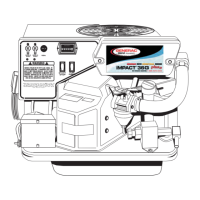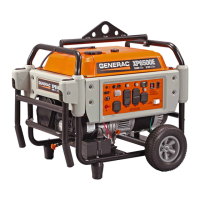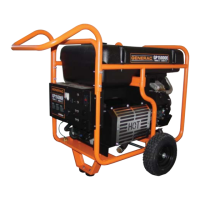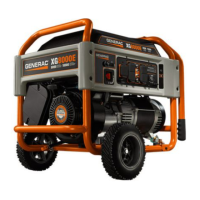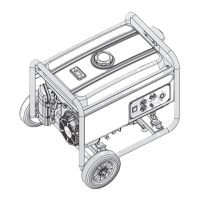Safety
Installation Guidelines for Spark-Ignited Stationary Emergency Generators 3
• If it is necessary to stand on metal or concrete while installing, operating, servicing, or repairing this equipment,
lay down a dry wooden platform and cover with insulated mats before beginning.
• Verify that the generator is properly grounded.
• Wire gauge sizes of electrical wiring, cables, and cord sets must be adequate to handle the maximum electrical
current (ampacity) to which it will be subjected.
• Before installing or servicing equipment, verify that all power voltage supplies are positively turned off at their
sources. Failure to do so can result in hazardous and possibly fatal electrical shock.
• Connecting this unit to an electrical system normally supplied by an electric utility is by means of a transfer switch
so as to isolate the generator electric system from the electric utility distribution system when the generator is
operating. Failure to isolate the two electric system power sources from each other by such means will result in
damage to the generator and may also result in injury or death to utility power workers due to backfeed of electri-
cal energy.
• Generators installed with an automatic transfer switch will crank and start automatically when NORMAL (UTIL-
ITY) source voltage is removed or is below an acceptable preset level. To prevent automatic startup and possible
injury, disable the automatic start circuit (battery cables, etc.) before working on or around the unit. Place a “DO
NOT OPERATE” tag on the generator control panel and on the transfer switch.
• In case of accident caused by electric shock, immediately shut down the source of electrical power. If this is not
possible, attempt to free the victim from the live conductor. AVOID DIRECT CONTACT WITH THE VICTIM. Use
a nonconducting implement, such as a dry rope or board, to free the victim from the live conductor. If the victim is
unconscious, apply first aid and get immediate medical help.
• Do not wear jewelry when working on this equipment. Jewelry can conduct electricity resulting in electric shock,
or may get caught in moving parts resulting in injury.
1.5 — Fire Hazards
• Keep a fire extinguisher near the generator at all times. Keep the extinguisher properly charged and be familiar
with its use. Direct any questions to the local fire department.
NOTE: DO NOT use any carbon tetra-chloride type fire extinguishers. These fire extinguishers emit toxic
fumes and the liquid can damage wiring insulation.
1.6 — Explosion Hazards
• Properly ventilate the room or building housing the generator to prevent buildup of explosive gas.
• Do not smoke around the generator. Immediately wipe up any fuel or oil spills. Ensure that no combustible mate-
rials are left in the generator compartment, or on or near the generator, as FIRE or EXPLOSION may result.
Keep the area surrounding the generator clean and free of debris.
• All types of fuels are potentially FLAMMABLE and/or EXPLOSIVE and must be handled with care. Inspect the
fuel system frequently and correct any leaks immediately. Be sure fuel supply lines are properly installed, purged,
and leak tested before placing the generator set into service.
1.7 — Standards Index
Be sure the generator set is in strict compliance with all applicable local, state, and federal laws, codes, and regulations
pertaining to such installations. Always use the current version or edition of the applicable law, code, and regulation as
it applies to the local jurisdiction. In the absence of pertinent local laws and standards, use the following published
materials as a guide.
1. National Fire Protection Association (NFPA) 70: The National Electric Code (NEC)*
2. NFPA10: Standard for Portable Fire Extinguishers*
3. NFPA 30: Flammable and Combustible Liquids Code*
4. NFPA 37: Standard for Stationary Combustion Engines and Gas Turbines*
5. NFPA 54: National Fuel Gas Code*
6. NFPA 58: Standard for Storage and Handling of Liquefied Petroleum Gases*
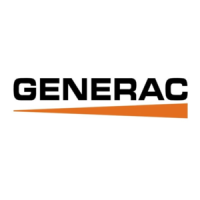
